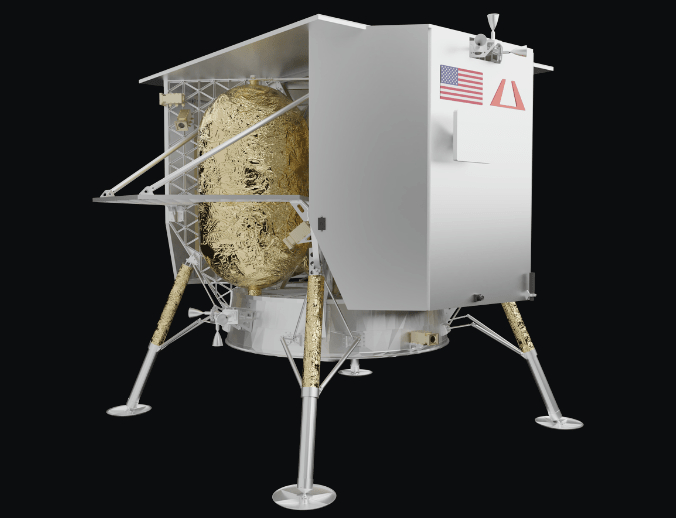AON3D, Astrobotic to send 3D-printed parts to the moon
The Peregrine Lander will carry thermoplastic parts printed via AON3D’s high-temperature industrial 3D printer that meet demanding space requirements and cut the vehicle’s weight by half.

Astrobotic’s Peregrine Lander. Photo Credit: AON3D
AON3D (Montreal, Canada), in partnership with Astrobotic and recently acquired $11.5 million in Series A funding, will be sending 3D-printed parts to the moon via Astrobotic’s Peregrine Mission One (PM1) moon lander. In order to achieve mission-critical parts that can perform under astronomical conditions, the 3D printer manufacturer is using its recently launched AON M2+ high-temperature industrial 3D printer, which takes full advantage of thermoplastics, carbon fiber composites and high-performance polymers like PEEK, PEKK and ULTEM.
The Peregrine Lander, designed to deliver commercial payloads to the surface of the moon, is set to launch in 2022, and will be the first lander to soft land on the moon — which avoids significant damage or destruction of the vehicle or its payload — since Apollo 17 in 1972. Astrobotic, a lunar technology company, was awarded the mission in early 2021. The lander will be launched aboard United Launch Alliance’s (ULA) composite Vulcan Centaur rocket powered by a pair of BE-4 engines manufactured by Blue Origin, another AON3D customer. The lander is currently in the construction phase. Knowing that the final frontier comes with extensive challenges, the company looked to 3D printing for cost savings and lightweight yet durable parts.
“There is no environment as demanding as the vacuum of space, and we need parts that are able to withstand the immense challenges of launch and spaceflight,” says Astrobotic Mechanical Engineer Clay Inman. “Being able to go from full-scale, economical prototypes to space-ready parts — using PEEK, PEKK and ULTEM on one machine — was huge for achieving our ambitious goals. Now, we can rigorously test our parts, create custom tooling and then go right into printing proprietary, mission-ready components with engineering-grade materials.”
Aerospace requirements include flame-retardant and chemically resistant properties; the ability to withstand temperatures ranging from 260°F-280°F (127°C-173°C) and radiation 200-1,000 times that of Earth’s surface; withstand vibroacoustics up to 180+ decibels; and maintain a high strength-to-weight ratio. However, AON3D notes that high-performance thermoplastics can withstand some of the most demanding applications while reducing vehicle mass; the 3D-printed thermoplastic parts have enabled Astrobotic to reduce weight by 50% weight on hundreds of aluminum parts.
AON3D M2+ was used for avionics boxes, relays, bus bars, connectors, fixture brackets and other mockups that are necessary for data handling and mission command were printed in-house. Capsules for the DHL MoonBox, which will be used to transport private payloads, were also 3D printed.
“AON3D is on a mission to 3D print the future by creating solutions that positively affect more business while addressing the pain points in global manufacturing,” says SineWave Ventures General Partner Vivek Ladsariya, which led the company’s Series A funding round. “With their printers’ ability to use the best available materials, the sky’s the limit for AON3D — exemplified by their 3D parts going to the moon. We look forward to watching AON3D continue to make history.”
Related Content
-
Jeep all-composite roof receivers achieve steel performance at low mass
Ultrashort carbon fiber/PPA replaces steel on rooftop brackets to hold Jeep soft tops, hardtops.
-
JEC World 2024 highlights: Thermoplastic composites, CMC and novel processes
CW senior technical editor Ginger Gardiner discusses some of the developments and demonstrators shown at the industry’s largest composites exhibition and conference.
-
Plant tour: Airbus, Illescas, Spain
Airbus’ Illescas facility, featuring highly automated composites processes for the A350 lower wing cover and one-piece Section 19 fuselage barrels, works toward production ramp-ups and next-generation aircraft.
















